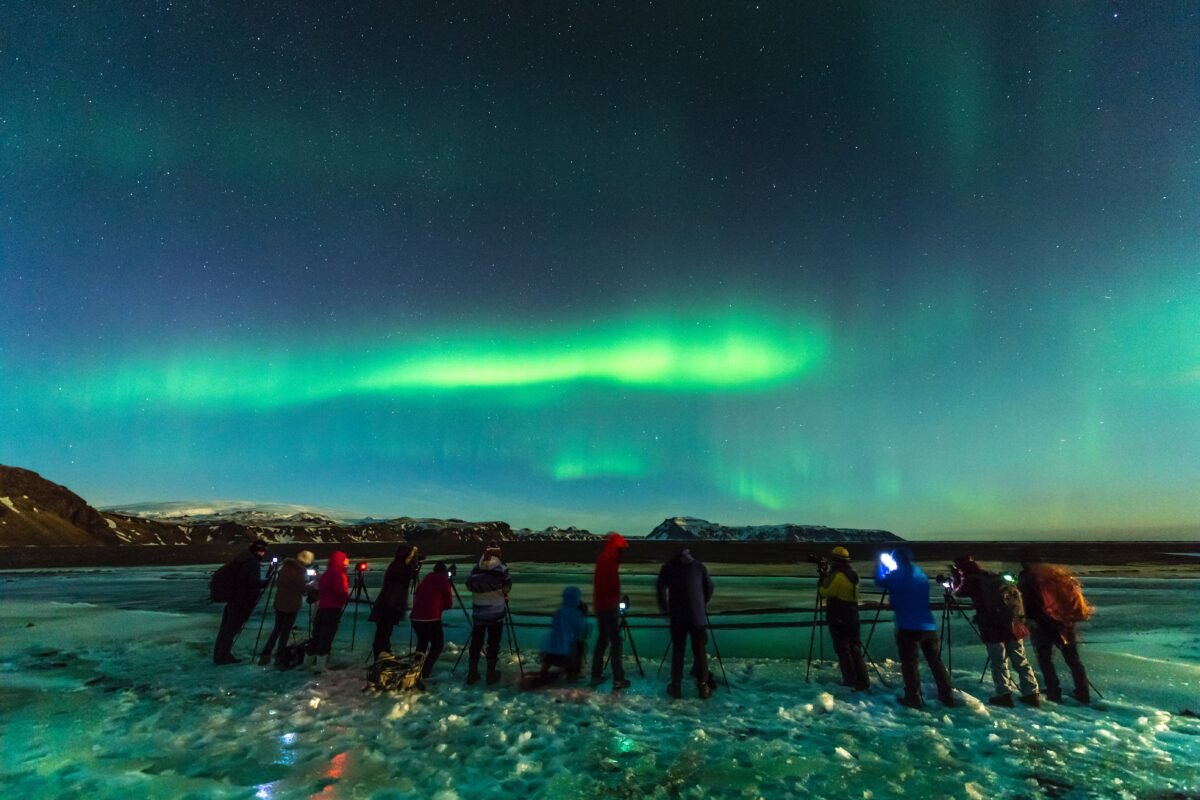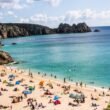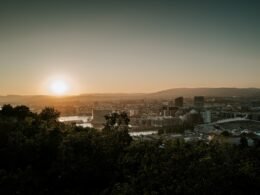Forget Disneyland, to experience the Northern Lights of Iceland makes the country one of the most magical places on Earth, and that, you can quote. There’s nothing like it—to gaze up into the clear night sky and witness a scientific orchestra of colorful auroras dancing to a silent tune miles above the planet is an experience like no other.
And now, it’s time to see the awe-inspiring aurora borealis of the arctic circle for yourself, live, in color, and in person. But first, there’s one very important question that must be answered to kickstart your grand adventure: When’s the best time to visit Iceland for the Northern Lights? Well, let’s get to it …

When’s the Best Time to See the Northern Lights in Iceland?
The best time to see the Northern Lights in Iceland is between October and March, when the skies are at their darkest throughout the year. Moreover, due note that November through February is literally the darkest time of the year in Iceland, when the average amount of sunlight in the day is around 4 to 5 hours, meaning you’ll have roughly 20 hours of dark skies and more time to potentially catch the Northern Lights.
When’s the Best Time to View the Northern Lights?
The best time to view the Northern Lights in Iceland is between 10 pm and 2 am. A good thing to know is that most hotels in the region have an aurora wake-up service, i.e. they’ll give you a courtesy call when there’s strong activity in the skies.

What’s the Best Way to See the Northern lights Clearly?
You’ll need a number of conditions working together flawlessly for the best viewing experience of the Northern Lights in Iceland.
1. Little to No Light: The ‘big’ city is not the ideal place to view the Northern Lights in Iceland clearly due to the light pollution in the skies. Sure, you can still see the Northern Lights from certain locations in Reykjavik, the capital city, but for the clearest view of the Northern Lights, it’s best to go to the darkest areas possible in Iceland.
2. Clear Skies: The Northern Lights will appear more Heavenly in the sky during a moonless, cloudless night and the further away you are haze and light pollution.
3. Busy Solar Activity: The Northern Lights are most active during periods where there is strong solar activity, like during September and March, when equinoxes occur.
Where’s the Best Place to See the Northern Lights in Iceland?
The best places to see the Northern Lights in Iceland are at the Grotta Lighthouse, Seltjarnarnes Peninsula, Thingvellir National Park in Reykjavik, and at Jökulsárlón Glacier Lagoon and atop Kirkjufell Mountain.

What’s Next?
So, now that you’ve got a better feel of when to see the Northern Lights in Iceland, when do you think you’ll go? Do you have clothes prepped for the blistering cold? Will you rent a car or take a guided tour? There are still plenty of questions left to answer, but hey, as the Man upstairs once said, “Let there be light!” Safe and happy travels!














